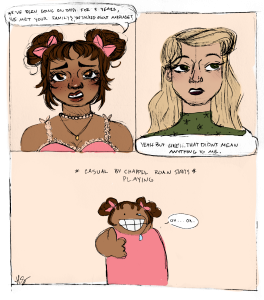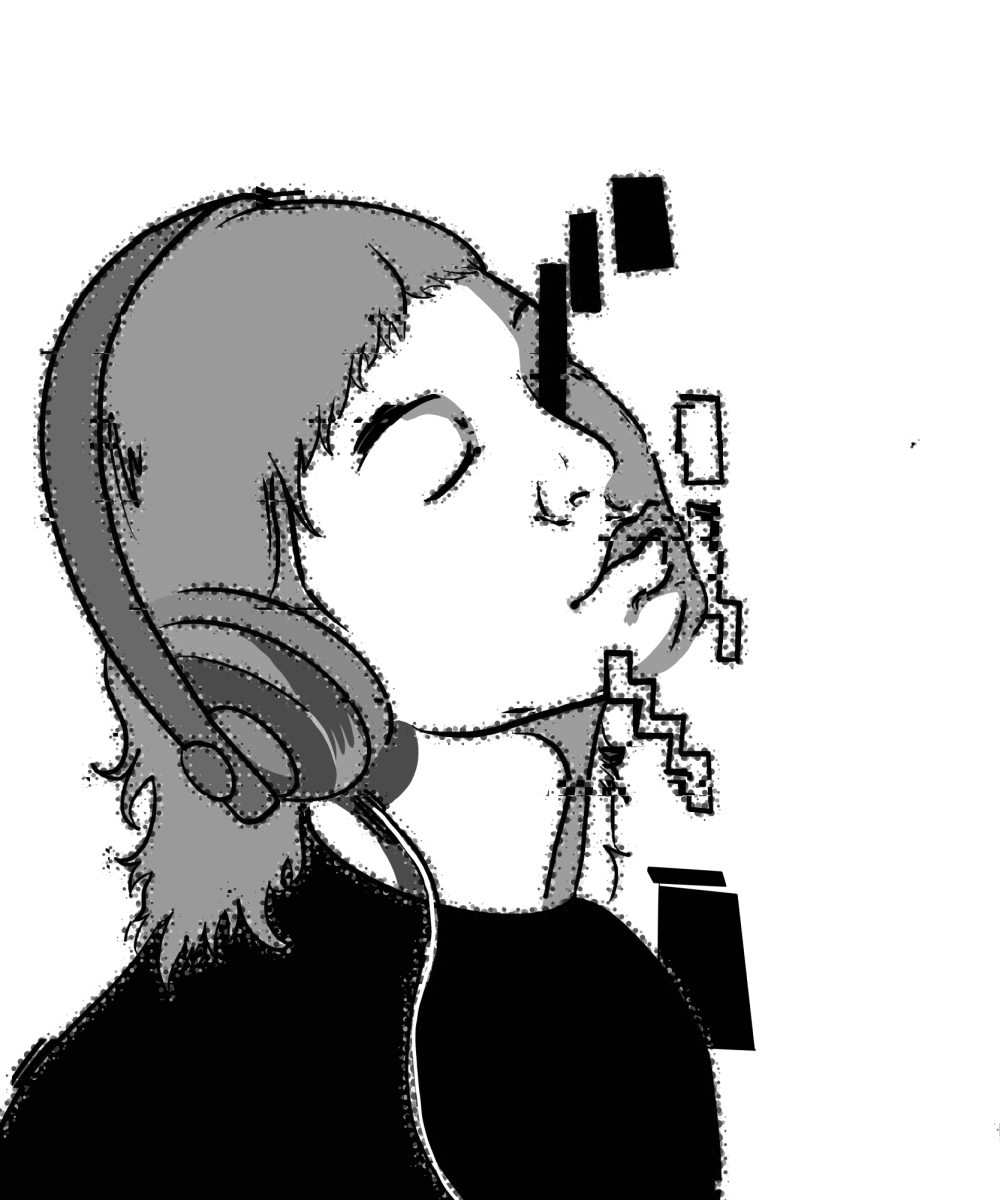Although this school week was only four days long due to the Noto Trip, it seemed to last an eternity. Anxious about my test on Wednesday, I stayed up late studying on Monday, the night of my return from Noto, and went to class the next day feeling slow and groggy.
We switched professors this week with the other third-year class, beginning our two-week period with Hamada-sensei. Hamada-sensei is much younger than Makino-sensei (he’s probably in his late 30s or early 40s), and much easier to understand. As I mentioned before, I think that Makino-sensei is so accustomed to teaching students at a higher level than third-year, he sometimes overestimates our ability to understand him. Hamada-sensei teaches at Columbia, and he’s very much “with it.” I’ve heard from some of the Columbia students in the program that when they go for Hamada-sensei’s office hours, they usually walk in on him playing handheld video games.
In class, we began a new chapter in our textbook: traditional crafts of Japan. Our embarkment on this chapter seemed appropriate after the Noto trip, on which we saw tons of handmade goods at the Wajima Morning Market and on display at Kagaya. Japanese traditional crafts are usually handmade, very beautiful and artistic objects that still have a practical use in daily life. Most of the time, the methods of making these crafts date back from before the Edo Period. As these crafts are usually made from natural materials like clay, wood, and stone, due to these materials’ availability in certain regions, each region of Japan has developed a particular traditional craft (Kanazawa has always been an area famous for the production of gold leaf, and thus is particularly well-known for its gilded chopsticks, cups, mirrors, etc.).

This week’s reading described washi, or Japanese paper. Thin, yet strong, washi is used to make all kinds of Japanese household items, including sliding doors, fans, and lamps. The reading in our book praised at length the warmth and softness of washi, reminding me strongly of one of my favorite books from last semester’s Japanese Art and Aesthetics class at Whitman: In Praise of Shadows by Junichiro Tanizaki. In Praise of Shadows is a long essay lauding the places where shadows collect in Japanese daily life. For example, Tanizaki thoroughly expounds upon the beauty of a piece of youkan (a type of gelatinous Japanese sweet) on a deep black lacquer plate, both so dark that one can scarcely tell where the sweet ends and the plate begins. Tanizaki holds a similar affection for washi, which makes everything a bit softer and shadowy-looking when light streams through it. As a result, I wasn’t surprised when In Praise of Shadows came up in class on Friday, although at first I didn’t recognize its Japanese title (陰影礼賛) on Hamada-sensei’s Power Point.

For homework this week we were instructed to talk with our host families and interview them about a certain Japanese traditional craft present in their home. At first I was a little worried that Ai-san wouldn’t have any traditional crafts, as her home is definitely a lot more modern than, for example, the homes of some of the older couples who host students for PII. As it turns out, Ai-san is the owner of a beautiful Kaga Yuuzen kimono that she graciously took out to show me. Kaga Yuuzen is a special kimono dying process that originated in Ishikawa Prefecture around the Edo Period. Kaga Yuuzen differs from other methods in that it’s a very realistic style of design; Kaga Yuuzen patterns sometimes even feature worm-eaten or dead leaves for a “natural” effect. Furthermore, the base colors used in Kaga Yuuzen (indigo, crimson, yellow ochre, grass green, and royal purple, known as the “Kaga Five”) are very specific to the style, and the colors are applied in such a way as to create an ombré-like progression from light shades to darker ones. The kimono Ai showed me is mostly deep orange with blue at the hem, with a design of casablanca flowers. Ai-san’s mother, as it turns out, is a kimono designer, and she designed the kimono for Ai-san for her Coming of Age Ceremony (the second Monday in January, a day of celebration for young adults who have reached the age of majority, which is 20 in Japan). The kimono‘s design was completely customized; since Ai-san really loves the sky and all of its colors, her mother decided to incorporate the orange of a sunset and the light blue of a daytime sky to her daughter’s kimono, as well as drawing her favorite flower. Among all the casablancas, Ai-san’s mother included a single blossom of her own favorite flower (in Japanese it’s called onshijuumu. I don’t know what it’s called in English!). The kimono was absolutely beautiful. I have no idea how much it cost, though from the way Ai yelled at little Haru when he went to touch the kimono with his sticky little-kid fingers, I’m guessing it’s worth quite a lot of money.

After she showed me the kimono, Ai-san brought out her yukata (a light summer robe), and helped put it on me. We had a little photo shoot in the living room, with Re-chan and Haru-chan joining in after Ai-san had put frilly bows in their hair as a joke.

Early in the week my class troubles came to a dramatic climax when I burst into tears at the breakfast table the morning of Wednesday’s “small test.” I had studied for about 7 hours straight the day before, from the afternoon until late in the evening, pausing only to eat dinner and rapidly shower, yet I still felt incredibly overwhelmed and underprepared. I knew that I was going to reach my breaking point eventually, with the stress this program has been causing me, and I’m actually glad it happened sooner rather than later, but my meltdown was nevertheless rather embarrassing. Ai-san was very supportive and comforting, giving me a big hug and saying “Kawaisou!” (You poor thing!) over and over. I pulled myself together, walked to school, and took my test. Despite all the time I put into studying, I still performed poorly.
At lunch that day I had a long talk with my parents over Skype, and they suggested that I look into taking my classes here pass/fail. Now, Whitman usually doesn’t award credit for pass/fail classes taken abroad, but since Princeton classes follow the “PDF” (Pass, “D”, Fail) formula, it is possible that I will still be able to receive credits for my classes abroad, provided I earn a grade of C- or higher. I am currently in the process of checking in with the Whitman Registrar to see whether they’d be willing to make an exception and give me credit for this special type of class. In the meantime, I will continue to try my best in my classes, but the pressure should no longer be so intense. My time abroad in Japan is supposed to be an enriching experience. Without a doubt I am learning a lot, and I’m making friends within and outside of the PII program, so I’m already achieving the goals I set for myself before coming here, regardless of how many kanji I force myself to memorize before my weekly tests. I already feel as though an enormous weight has been lifted from my shoulders. Now I can actually play with Re-chan and Haru-chan when they ask me to, and I can take some time to explore Kanazawa in my new-found free time. Furthermore, I felt really justified in my decision when I found out from a PII friend from Harvard that all of the students from his school are doing the program pass/fail. Harvard students make up a significant part of the student population of PII, so I was relieved to find out that choosing to do the program pass/fail didn’t make me an outlier in any way.
With my stress load lightened considerably, the week came to a fairly pleasant close. I feel as though my Japanese is improving considerably with each passing week, and I can now actually hold pretty long conversations with people without fumbling over wording and grammar too much. On Friday afternoon, some of the PII students gathered in one of Rifare’s classrooms to watch Shaberedomo, Shaberedomo, a movie about rakugo, the same comic storytelling form that Arthur Binard referred to in last week’s lecture. It was quite good, though a bit slow, and I would recommend it!

This weekend was in part devoted to studying and preparation for my upcoming exams. Next week is the final week of our month-long “semester,” and I have two “small tests” on Monday and Tuesday, followed by a presentation on Wednesday and a midterm on Thursday. Thankfully I have a very strong incentive to study and power through this testing period: on Thursday afternoon I’m traveling by train to visit Chiyo Yamamoto, Whitman’s Japanese native speaker for the past two years. Chiyo-san has been with me throughout my Japanese language education, assisting in my first-year Japanese class with Takemoto-sensei and living in Tekisuijuku Interest House with me last year. In May, I had the pleasure of showing Chiyo-san around Japantown in San Francisco. Next weekend I’ll get to meet her family and explore her hometown in Kanagawa Prefecture (that’s Kanagawa with a G. The Japanese language has the least sounds of any language, so words and place names can often sound the same or similar, easily leading to confusion. This is actually where kanji comes in handy; the Chinese characters help differentiate between words like 帰る and è›™, both pronounced “kaeru,” but with the former meaning “to return home” and the latter meaning “frog.”)
Speaking of frogs, Re-chan proudly showed me one he caught on Friday afternoon. He was really excited to take it to his dad’s house for the weekend, and kept asking me if I knew what frogs ate. I tagged along with Ai-san on her trip to drop off the kids (this time the transfer took place in a shopping center parking lot and was strangely reminiscent of a drug deal), and I finally got to meet Masa, the boys’ dad. He’s quite handsome! With good looks from both parents, I have a feeling that Re-chan and Ha-chan will grow up to be really kakkoii (attractive or “cool”). We made pleasant conversation for a few minutes, then Ai-san and I said goodbye to the boys for the weekend. It was a bit quiet and lonely without them around the house this weekend, especially since Ai-san and I were both pretty busy.

On Saturday I was able to fit in some fun activities in addition to a meeting with my partner for our class’s final project. After putting in a few good hours of work on our presentation transcript and Power Point, I went with three other PII students to a classical music concert put on by the Kanazawa Orchestra. The orchestra performed pieces by Mozart and Schubert, and I found the concert absolutely delightful (though I know very little about classical music other than that I enjoy it). After the concert, we went out for oden (Japanese hot pot) and yakionigiri (grilled rice balls, which I am definitely going to try to make myself when I return to the U.S.). Since dinner ran so late, for the first time since I came to Kanazawa I actually found myself in danger of missing the shuuden (last train of the evening). Luckily, since everyone in our small group had to take the same train, we pooled our money for a cab to the station and managed to catch the train with minutes to spare. This is one rather unfortunate feature of Japan’s otherwise excellent train system; unlike the New York subway trains, Japanese trains do not run 24 hours a day. Even London’s Underground runs trains later than Kanazawa Station trains (the very last one departs from the station at 10:49).
Today I spent most of the day at Rifare, studying once again. In the evening after I had returned home, Ai-san and I took advantage of the boys’ absence to go out for Italian food, which was surprisingly awesome considering we’re not exactly in an area famous for its Italian cuisine. From the restaurant we went to retrieve the boys from Masa-san’s house, where we discovered, much to Ai-san’s dismay, that the boys’ father had given them a tank full of crayfish to take home and keep as pets (the frog Re-chan caught on Friday had apparently made a bid for freedom and escaped early on in weekend). We squeezed the tank into the backseat, with Ai-san wondering aloud where on earth we were going to put this huge tank of crayfish in her small house. Re-chan immediately piped up plaintively, “Mom, we can’t put them outside, they’ll die!” For now, the tank has been placed on the front porch.
As a final note, this week we were hit by our first typhoon of the season. It was rainy and extremely windy for a few days, but it didn’t seem to me to be any more severe than a run-of-the-mill “bad storm.” They take typhoons pretty seriously in Japan, though, as I discovered on Tuesday afternoon while departing with some PII students from zazen (seated Zen meditation). As we exited the temple grounds, we heard a woman’s voice over mounted loudspeakers issuing a warning about the coming typhoon and urging everyone to be cautious on their return home that evening. I went back to Rifare to study some more before heading home by train, and I sent Ai-san a brief message over Facebook letting her know that I might be a little late and to please eat dinner before me if the boys were getting hungry. She responded by saying that it was too dangerous to go home by train and that she would come pick me up from Rifare. It was really nice of her to do so, but I’m thinking that she probably didn’t have to go so out of her way. In the car on the way home, Ai-san told me that Haru-chan had been really worried about me. In his class at preschool, they had talked about the typhoon, and he came home quite upset. When Ai-san asked him what was wrong, he told her, “It’s going to be really windy and rainy today. It’s probably going to be too dangerous for Karin to return home on her own. You should go pick her up!” Can I just say…cutest host family EVER?
Since I have a very busy week coming up, it’s unlikely that I’ll be able to post before the weekend. Stay tuned for updates on my long weekend in the Tokyo area!








